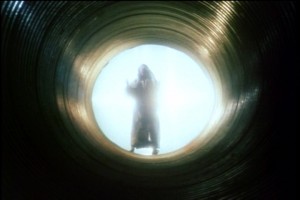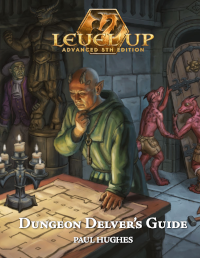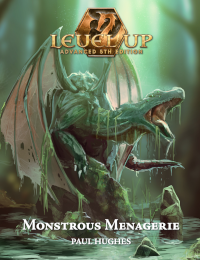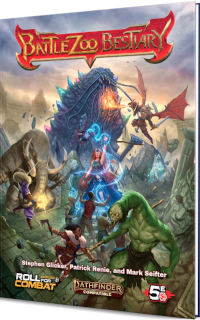Castle Ravenloft uses simplified D&D mechanics. Movement speed and tactical positioning are of reduced importance, so, ironically, the Ravenloft board game points to a version of 4e D&D that can be played off the battlemap, without minis.
Most Ravenloft monsters move 1 room per turn. Extremely fast ones, like wolves, move 2 rooms. A room is a dungeon tile: it might be, say, four by four squares. At this lower level of granularity, though, we’re usually not dealing with squares; we’re dealing with zones or range bands: concepts used by RPGs that are less finicky and tactical than D&D.
If you applied these movement rules to D&D combats, most combatants will probably end up in the same zone. Suddenly, it becomes pretty easy to track everyone’s position without a map. Chances are, all the melee fighters are going to be in the same zone, and some ranged guys will be one or two zones away. You could track this on a little zone chart, or even in your head.
This is not a ready-to-play 4e D&D houserule: 4e has too many game elements that involve shifts, pushes, pulls, and other square-based movement. It’s more of a wishful fantasy for 5e. Sometimes I like playing a tactical encounter on a battlemat, and sometimes I like to run a combat in everybody’s imagination. In my magical perfect D&D game: let’s call it Pauls and Dragons: every such rule would have two rules writeups, one for battlemat play and one for no-map play. Example:
Battle Push
Tactical map rule: The target is pushed up to 3 squares to a square that is not adjacent to any other creature.
Mapless rule: On the target’s next turn, it must spend a move action before it makes a melee attack.
In this imperfect world, one might want to play mapless 4e even without the full Pauls and Dragons rules being available. Here are some quick rules substitutions for zone-based D&D:
Adjacent: Everyone in the same zone is considered to be adjacent to everyone else.
Combat advantage: Movement can be used to gain abstract positioning.
When a push, pull, slide, or shift power is used, the actor makes a saving throw, with a bonus equal to the number of squares pushed, pulled, slid, or shifted. On a success, the actor gains combat advantage against another creature in the same zone. Combat advantage lasts until the actor or the subject moves again.
Hindering terrain: Pushes, pulls, and slides can move a creature into a pit or other dangerous terrain in the same zone. The pusher/puller/slider makes a saving throw, with a bonus equal to the number of squares pushed, pulled, or slid. On a success, the victim is moved into the hindering terrain. (The victim gets its usual saving throw to avoid being moved into the terrain.)














